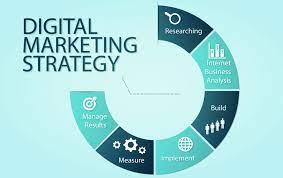The Power of Marketing Advertising
Marketing advertising plays a crucial role in promoting products and services, creating brand awareness, and driving sales. It is a strategic communication tool that businesses use to reach their target audience and influence consumer behaviour.
Benefits of Marketing Advertising
Effective marketing advertising can:
- Build Brand Awareness: By consistently showcasing your brand through various advertising channels, you can increase recognition and familiarity among consumers.
- Drive Sales: Well-executed advertising campaigns can attract new customers, encourage repeat business, and ultimately boost sales revenue.
- Engage Customers: Engaging and creative advertisements can capture the attention of your target audience, sparking interest and interaction with your brand.
- Establish Credibility: Through strategic messaging and storytelling, advertising can help build trust and credibility for your brand in the eyes of consumers.
- Stay Competitive: In today’s competitive market landscape, effective advertising can help differentiate your brand from competitors and stand out in the crowd.
Types of Marketing Advertising
There are various forms of marketing advertising, including:
- Digital Advertising: Utilising online platforms such as social media, search engines, display ads, and email marketing to reach a digital audience.
- Print Advertising: Traditional print mediums like newspapers, magazines, brochures, and flyers for targeted offline marketing campaigns.
- Broadcast Advertising: Television and radio commercials that reach a wide audience through visual and audio storytelling.
- Outdoor Advertising: Billboards, posters, bus wraps, and other outdoor signage for high-visibility brand exposure.
In conclusion, marketing advertising is a powerful tool that businesses can leverage to connect with their target audience effectively. By understanding the benefits of advertising and utilising various channels strategically, businesses can drive growth, enhance brand visibility, and achieve their marketing objectives.
Understanding Marketing Advertising: Key Questions Answered for Business Success
- What is marketing advertising and why is it important?
- How can businesses benefit from marketing advertising?
- What are the different types of marketing advertising channels available?
- How can I create an effective marketing advertising campaign?
- What metrics should I track to measure the success of my marketing advertising efforts?
What is marketing advertising and why is it important?
Marketing advertising is a strategic communication tool used by businesses to promote their products or services to a target audience. It involves creating and delivering persuasive messages through various channels to influence consumer behaviour, build brand awareness, and drive sales. Marketing advertising is important because it helps businesses connect with their customers, differentiate themselves from competitors, and establish a strong brand presence in the market. By effectively utilising advertising strategies, businesses can engage with their audience, convey their value proposition, and ultimately achieve their marketing objectives.
How can businesses benefit from marketing advertising?
Businesses can benefit significantly from marketing advertising in several ways. Firstly, it helps in building brand awareness by reaching a wide audience and establishing recognition for the products or services offered. Additionally, marketing advertising can drive sales by attracting new customers and encouraging repeat business through compelling messaging and promotions. Furthermore, it allows businesses to engage with their target audience effectively, creating opportunities for interaction and relationship-building. Ultimately, marketing advertising enables businesses to stay competitive in the market, differentiate themselves from competitors, and ultimately achieve their growth objectives.
What are the different types of marketing advertising channels available?
When exploring the diverse landscape of marketing advertising, it’s common to inquire about the various types of channels available for reaching target audiences effectively. These channels encompass a wide range of mediums, including digital platforms such as social media, search engines, and email marketing, which offer extensive reach and engagement opportunities. Additionally, traditional avenues like print advertising in newspapers and magazines, broadcast advertising on television and radio, as well as outdoor signage such as billboards and posters, provide tangible visibility for brands. Understanding the multitude of marketing advertising channels allows businesses to craft comprehensive strategies that resonate with their audience across different touchpoints and maximise their impact in the competitive market environment.
How can I create an effective marketing advertising campaign?
Creating an effective marketing advertising campaign involves careful planning, strategic execution, and a deep understanding of your target audience. Start by defining clear objectives for your campaign and identifying key performance indicators to measure success. Conduct thorough market research to understand consumer preferences, behaviours, and trends. Tailor your messaging and creative content to resonate with your target audience, ensuring consistency across all advertising channels. Utilise a mix of digital, print, broadcast, and outdoor advertising mediums to reach a diverse audience. Regularly monitor and analyse campaign performance data to make informed adjustments and optimise results. By following these steps and staying agile in response to feedback, you can create a compelling and impactful marketing advertising campaign that drives engagement and delivers results for your brand.
What metrics should I track to measure the success of my marketing advertising efforts?
When evaluating the success of marketing advertising efforts, it is essential to track various metrics to gauge performance accurately. Some key metrics to consider include conversion rates, click-through rates, return on investment (ROI), cost per acquisition (CPA), and customer lifetime value (CLV). Conversion rates indicate the percentage of users who take a desired action after viewing an ad, such as making a purchase or signing up for a newsletter. Click-through rates measure the number of clicks on an ad relative to the number of impressions it receives. ROI helps assess the profitability of advertising campaigns by comparing the revenue generated to the costs incurred. CPA calculates the average cost required to acquire a new customer through advertising efforts. Lastly, CLV estimates the total value a customer brings to a business over their entire relationship. By tracking these metrics and analysing their trends over time, businesses can gain valuable insights into the effectiveness of their marketing advertising strategies and make informed decisions for future campaigns.







